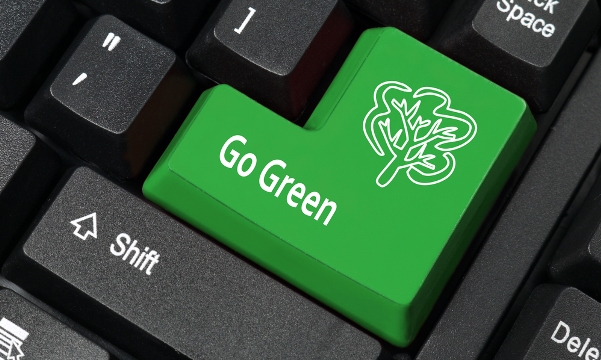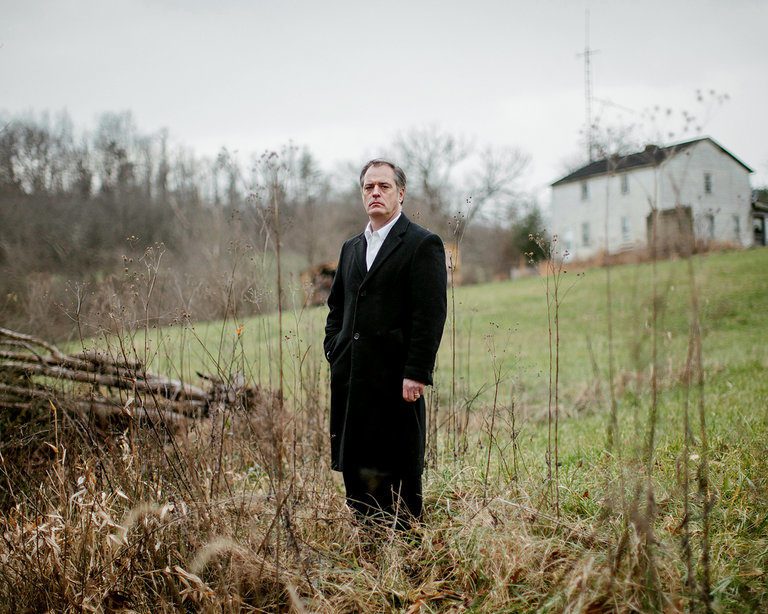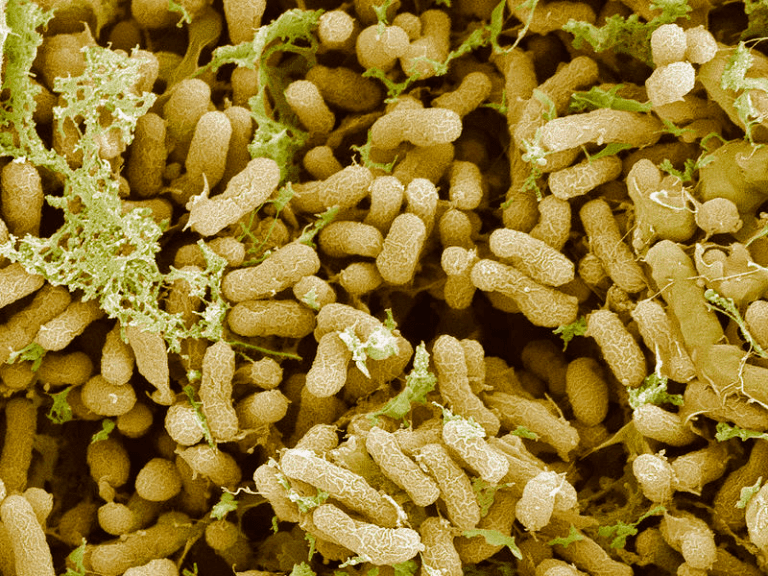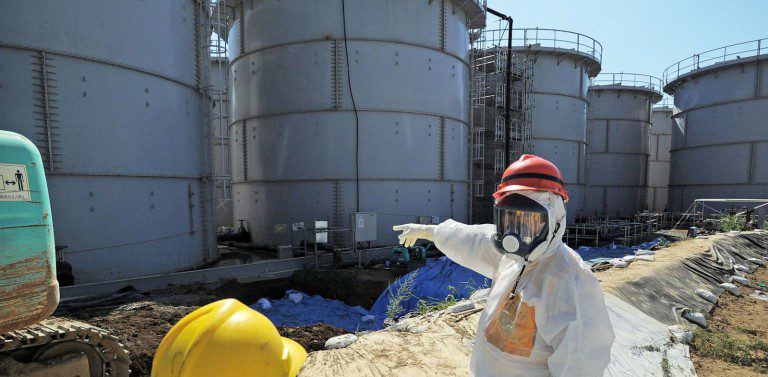Fast Company -Mark Borden, Jeff Chu, Charles Fishman, Michael A. Prospero, and Danielle Sacks
Half-a-hundred options for cleaning up your business, from the universal (catch that rainwater!) to the specific (lose the plastic bowls!). Mix, match—join in.
Imagine asking today how the Internet affects business. It’s an absurd question, like asking how electricity changed business. Asking the same about sustainability, it turns out, is equally absurd. Like the Internet, sustainability spurs innovation in everything, from how you see your business model to whether you see your employees (why not let them work at home more?). Here are our favorite ways companies today are greening up-and saving money and making better widgets in the process.
1 At $100 a ton, feeding a landfill is pricey. But in the past two years, General Mills has turned its solid waste into profits. Take its oat hulls, a Cheerios by-product. The company used to pay to have them hauled off, but realized they could be burned as fuel. Now customers compete to buy the stuff. In 2006, General Mills recycled 86% of its solid waste, earning more from that than it spent on disposal.
2 Moore’s Law is great for producing speedier devices, but it’s hell on the environment. According to Greenpeace, demand for new technology creates 4,000 tons of e-waste an hour, which often ends up on dead-hardware mountains in India, Africa, and China. Enter take-back programs, in which customers return spent technology to manufacturers, who recycle the parts for new gadgets. The United States has long lagged behind many European nations, which mandate the programs, but that’s finally changing. Dell is leading the way. Last year, the PC maker recovered 40,000 tons of unwanted equipment for recycling, up 93% from 2005.
3 Trains were already the cleanest way to move massive amounts of freight long distances, but General Electric raised the game with its Evolution locomotives, diesel engines launched in 2005 that cut fuel consumption by 5% and emissions by 40% compared to locomotives built just a year earlier. Up next, a triumph of sheer coolness: a GE hybrid diesel-electric locomotive that, just like your Prius, captures energy from braking and will improve mileage another 10%. According to GE, the energy dissipated in braking a 207-ton locomotive during the course of a year is enough to power 160 homes for the same period.
4 Not to be outdone in the freight game, Wal-Mart is providing funding to the biggest truck manufacturers–ArvinMeritor, Eaton, International, and Peterbilt–to develop the first heavy-duty diesel-hybrid 18-wheeler. Wal-Mart, which operates the second-largest truck fleet in the country, will test the prototypes next year.
5 Austin-based concert promoter C3 Presents made news when it banned Styrofoam cups from the sixth annual Austin City Limits Music Festival this year. Beneath the quick-hit media pop was a deeper story: Following the model the company created for Lollapalooza, C3 took a holistic approach to greening nearly every aspect of ACL, from bamboo-based concert T-shirts to gel sanitizer in the bathrooms to bio-diesel power generators.
6 It’s not just hippies making the special-events world eco-friendly. The Philadelphia Eagles claim to be the greenest team in the NFL–and not just because of the color of its jerseys. Starting this season, the team’s “Go Green” environmental campaign has its stadium cleaning crew making two full sweeps after each game–one to pick up recyclables and another for trash.
7 First we counted calories, then carbs. Now it’s carbon, as retailers introduce product labels that encourage customers to weigh their eco-sins. The most ambitious: British grocery giant Tesco, which has a program to label all 70,000 of its products with carbon breakdowns.
8 Hamburger Helper helps your hamburger … save the planet? This year, General Mills redesigned the packaging of Mom’s old standby, shaving off 20% of the paperboard box without shrinking its tasty contents. The astounding result: 500 fewer distribution trucks on the road each year.
9 Another recent player in the un-supersize movement, Unilever, reconfigured the plastic bottles for its billion-dollar Suave shampoo brand, saving plastic equivalent to some 15 million bottles a year.
10 Taking the packaging revolution a step further, the liquid-laundry-detergent industry, goaded by Wal-Mart, has cut the size of its bottles by 50% or more by concentrating the liquid to two and sometimes three degrees of magnitude. Unilever’s triple-concentrated All Small & Mighty detergent has saved 1.3 million gallons of diesel fuel, 10 million pounds of plastic resin, and 80 million square feet of cardboard since 2005. This fall, Procter & Gamble is converting its entire collection of liquids to double concentration.
11 Ford has sped up its painting process with technology that applies all three coats in one go, eliminating the need for the costly and energy-sucking drying equipment used between coats. In the process, Ford will reduce CO2 emissions from production by 15% and volatile organic compound emissions by 10%. More important (for the bottom line), the process will save $7 per car by reducing painting time by 20%.
12 Fox has redefined eco-boom on the set of 24, switching from regular fuel to renewable-source biodiesel to feed the show’s many explosions and car-chase scenes. 24 uses more than 5,000 gallons of fuel a month, and the switch hasn’t increased costs.
13 In a bid to shame lead-foot drivers, next year Fiat will roll out EcoDrive, a program developed by Microsoft. The system records performance data, such as CO2 emissions and fuel consumption, onto a USB key. Plug the key into a PC, and the program will analyze the data and provide driving tips to lower emissions.
14 Finally, something to do with skunked beer: In a partnership with Colorado engineering firm Merrick & Co., Coors produces 3 million gallons of ethanol a year by distilling waste beer. The brewery sells 200-proof ethanol to Valero Energy to be distributed at gas stations in Colorado. The program has been so successful that Coors doubled its capacity by building a $2.3 million facility in 2005.
15 This October, the Sierra Nevada Brewery in notorious party town Chico, California, installed a 250-kilowatt fuel-cell power unit and officially dropped off the grid. Drunk with power (energy efficiency is expected to be double what it was getting from Pacific Gas & Electric), the brewery plans to sell the surplus wattage back to the electric company.
16 Let there be less light! That was the conclusion of an energy audit at the Hong Kong headquarters of Star TV, News Corp.’s Asian broadcasting subsidiary, which found that by removing one out of every three fluorescent tube lights–about 1,300 in all-it would trim its CO2 emissions by 18,000 pounds a year.
17 Used to be, a 55-gallon drum full of silicon wafers unsuitable for computers sold for a paltry $100. But as the solar-power industry has taken off, those same chips now have real value; they work fine in solar cells. Today, chip makers are scrambling into a new market valued at $750 million. This year, Texas Instruments alone will sell about 1 million scrap wafers for $8 million. By reusing the silicon, TI estimates it has eliminated 15 million pounds of CO2 emissions and saved 3.7 million watts of electric power since the program began.
18 The hot zone in any office is the server room, where the ceiling-high racks of computers generate constant heat. The water that chills the rooms by absorbing heat is usually sent to cooling towers to evaporate. At Intel ‘s newest data center, in Haifa, Israel, the hot water will instead be recycled to warm the building in winter and to heat the showers in the gym year-round.
19 By 2009, the cost of powering and cooling data centers will eclipse the cost of the servers themselves. Hence IBM’s Project Big Green, a billion-dollar-a-year investment in technology to double the efficiency of servers that currently can run at only 30% capacity–a move that could save clients 40% in IT-power costs.
20 Few things scream “waste” as loudly as the plastic containers you fill at salad bars. Even Whole Foods Market used them–until this spring, when it replaced them with ones made of sugar-cane waste. Salad containers have a useful life of about 35 minutes, but the plastic ones have an actual life of thousands of years; the new ones decompose in about 90 days.
21Casual Friday might not resonate with natty Italians, but when the country’s largest power company, Eni, wanted to save some energy (and money), it asked its workers to embrace “lighter and cooler” attire and raised the thermostats at HQ one degree Celsius. The summer’s savings: 217,000 kilowatts and CO2 emissions equivalent to 140 employees taking public transport for a year.
22 The much-hyped Bank of America Tower, which will be the second-tallest building in New York when it’s finished next year, is the first skyscraper in America to pursue LEED Platinum certification. Our favorite innovation: a geothermal heatexchange system that’s the first of its kind in a high-rise. In the winter, pumps will draw heat from groundwater to help warm the building; in the summer, the process will work in reverse, pumping excess heat into the bedrock beneath the tower. The system will contribute to the building’s goal of using just half the electricity of a conventional building its size.
23 Meeting LEED standards isn’t the only way to green a building. Sun Microsystems likes to nix office space entirely. Its Open Work program, 10 years and 20,000 participants strong (that’s 56% of Sun’s workforce), gives employees the option to work from home. Talk about a triple bottom line: In 2006, Sun saved $67.8 million in real-estate costs, prevented nearly 29,000 tons of CO2 emissions, and increased worker productivity by 34%. The master of the virtual workspace now has a consulting practice to help other companies do the same.
24 Timberland awards its employees who buy hybrids not only with a primo parking spot but also with $3,000 toward the car’s purchase. Bank of America has a similar program. Google is one-upping both with a $5,000 incentive.
25 At Enterprise Rent-A-Car, about half the fleet–more than 334,000 vehicles-gets more than 28 mpg (nearly 10 times the number of fuel-efficient vehicles offered by its closest competitor, Enterprise boasts). The company is adding thousands of hybrids and FlexFuel cars.
26 At its Manhattan headquarters, JPMorgan Chase is starting renovations at the top–on the roof, 53 stories up, where the bank is building what is essentially a giant pan to collect rainwater. The water will be funneled into a 55,000-gallon tank in the basement, filtered, and then piped up for toilet flushing. Coupled with new low-flush urinals and toilets, this system will cut the building’s water use–and cost–by 30%.
27 The corporate restroom isn’t fully green without Dyson’s new Airblade hand dryer, which does its job in half the time (12 seconds) and with half the energy (1,400 watts) of conventional dryers. It costs four times as much up front, but the energy savings can pay you back in three years. AMC Theatres is testing the units now.
28 California-based managed-care provider Kaiser Permanente knew that its vinyl floors weren’t doing Mother Nature (or patients or employees) any favors: PVC in the vinyl releases dioxin when it’s created, and it lets loose other harmful particulates when buffed, to say nothing of the harsh chemicals used in cleaning it. Kaiser started replacing the floors in 2005 with PVC-free recycled rubber, which costs more to install but pays for itself in five years by slashing maintenance costs by as much as 80%. A side benefit: fewer slips and falls (and calmer actuaries as a result).
29 It was 1853 when Otis introduced the first safety elevator and forever changed the urban landscape. With the introduction of the company’s Gen2 lift, the company has re-imagined what has largely been unchanged for more than 150 years. Replacing steel cables with a flat, polyurethane-coated steel belt, Otis was able to eliminate a bulky machine room and create a lubrication-free system. The result is not only a quieter and smoother ride, but combined with “regenerative drive” technology that returns electricity to the building grid, the new elevators are 75% more efficient than conventional drive systems. Gen2 lifts are becoming de rigueur in the slickest, greenest new towers, including Fast Company’s new home, 7 World Trade Center.
30 Unlike most big-box retailers that are debuting discrete green product lines, Staples has eco-modified a whopping 3,000 of its mainstream private-label products to include at least 30% post-consumer waste. From sticky notes to shipping boxes, nearly all of the new offerings do not have a nonrecycled alternative in the product line. The end goal: to pressure the entire industry to follow suit.
31 One initial problem with Staples’ new emphasis on recycled paper: less durable products. The solution? Reinvent paper. The company’s hanging file folders now include 50% regenerated cotton (aka “denim”), and its “carbon neutral” notebook paper is 90% bagasse, a sugarcane by-product the company buys from Argentine farmers who would otherwise burn the spent cane, polluting their own communities.
32 Talk about turning garbage into a useful resource: The University of New Hampshire signed a deal this year with Waste Management Inc. to get 80% to 85% of the power and heat for its 14,000-student campus, using methane piped in from a nearby landfill. UNH must build a 12.7-mile pipeline to carry the gas, but the $45 million project is expected to save enough to pay for itself in 10 years.
33 Take the foodie trend of consuming only locally grown products and apply it to sportswear: That’s what Nike has done with its Considered line. The company hascommitted to sourcing as much of the products’ raw materials as possible–recycled polyester and rubber, organic cotton, hemp–from within 200 miles of the factory, cutting the environmental and financial costs of transportation. Of course, the finished goods still have a long trip to market; the Considered line is made in China and Thailand.
34 If flying is the new smoking, fractional jet companies are the eco-equivalent of Philip Morris. But this fall, Warren Buffett’s NetJets begins hitting its clients with a healthy dose of guilt serum: $5,000 extra a year, to pay for carbon offsets.
35 Surfers are generally pro-environment; their petrochemical-based gear is not. Patagonia is looking to change that. Its latest wet suit is made of Japanese neoprene, unbleached New Zealand merino wool, and PVC-free kneepads; and it uses 80% less petroleum than its competitors. Better yet (for surfers), at 3 millimeters thick, it produces the same warmth typically associated with 5 millimeters.
36 Emissions aren’t the only enviro-scourge of the air-travel industry. U.S. airlines throw away enough aluminum cans every year to build 58 new 747s. At the urging of its own flight attendants, Delta Air Lines launched an on-board recycling program this past summer in a few of its hubs. In the first three months, flight attendants, who sorted cans, newspapers, and plastic, collected 60 tons of recyclables. The program will expand to all domestic flights by the end of 2008.
37 Not content to confine its green efforts to recycling, Delta has also become the first U.S. airline to offer its passengers carbon offsets for their trips at the same time that they buy their tickets. The offsets–available only at Delta.com–cost $5.50 per roundtrip domestic ticket, and the money goes to the Conservation Fund’s Go Zero program.
38 Paper or plastic? The unsatisfying answer is neither. Retailers including Ikea and Trader Joe’s sell heavy-duty polypropylene sacks designed to be reused. But how do you get convenience-obsessed American shoppers actually to use them again? Timberland’s “Trash Is My Bag” totes (made from recycled plastic bottles) cost $5.50 each or come free with a $100 purchase; to encourage reuse–and more shopping at Timberland–each bag doubles as a 10%-off coupon through the end of 2008.
39 Speaking of reuse, Target has slashed its waste by 70%. The company has applied its signature craftiness to taking advantage of every opportunity to recycle. Last year, it recycled or refurbished 47,600 broken shopping carts, 2.1 million pounds of broken plastic hangers, 4.3 million pounds of shrink-wrap from distribution centers, and more than 10,000 pounds of rechargeable batteries.
40 Knocking down drywall and rebuilding the office every time your workforce shifts doesn’t exactly square with running a sustainable business. Enter Steelcase’s new Pathways Privacy Wall, a 10-foot-high steel-frame reconfigurable wall that also happens to be the first of its kind that’s “cradle-to-cradle” certified–meaning the entire structure can be economically (and easily) disassembled into component materials for recycling. What’s more, it contains 30% recycled materials to begin with.
41 From the department of small moves: This holiday season, Gap Inc. debuts gift cards made from recycled plastic. And next spring, its Gap and Banana Republic brands will convert their price tags to 100% post-consumer recycled material. It’s not exactly retooling an entire soccer-mom wardrobe into sustainable organic cotton, but it does add up: Gap price tags alone account for 10 tons of paper.
42 Looking to create a computer-industry equivalent of LEED certification, the EPA in 2006 created EPEAT, the Electronic Product Environmental Assessment Tool, which rates the “greenness” of computers for large-scale buyers based on 51 criteria such as energy use and amount and types of plastics. Since it began, the program has rated more than 600 computers from 23 companies, which voluntarily submit their products for review. Early adopters include Apple, Dell, HP, and Lenovo.
43 Last year, U.S. sales of organic food increased 22% to $17 billion, but still accounted for only 3% of all food and beverage sales. To better understand this burgeoning market and the challenges faced by organic farmers, Wegmans supermarkets this year started a 50-acre organic research farm just outside of Rochester, New York. Starting small with just potatoes and tomatoes, the company hopes to develop best practices (read: cost-efficient as well as healthy) for organic farming in the Northeast. Once it gets it figured out, Wegmans hopes to share its findings with the 800 farmers who supply its stores.
44 Wal-Mart is the champ when it comes to twisting suppliers’ arms to boost their sustainability efforts (and efficiency). Increasingly, other companies are doing the same-most recently Marriott, which announced it will be scrutinizing everything from its duvets to its shampoos. In true Wal-Mart fashion, suppliers that don’t make the grade may end up out on the street.
45 Federal laws on greenhouse-gas emissions are inevitable, so let’s get on with it already! That’s the logic behind the United States Climate Action Partnership, a big-biz coalition pushing for federal standards. Notably, USCAP includes companies with mixed eco-cred–BP, Rio Tinto, GM –as well as green stalwarts such as Environmental Defense and the Nature Conservancy. Its goals include a mandatory 60% to 80% cut in emissions by 2050 and a uniform nationwide market free of the current patchwork of state regulations. Oh, and fiscal incentives for new technology–a big opportunity for firms like GE, whose CEO Jeff Immelt led the effort to launch USCAP.
46 Another kind of network is sprouting in an old lamp factory in Chicago as Baum Development unveils the Green Exchange, a 250,000-square-foot retail and office space reserved exclusively for green companies. Billed as the country’s first “green business community,” the development’s concept is that proximity will foster the exchange of ideas. Set to open in Fall 2008, the building is already 40% leased, with tenants including an electric-car dealer, energy consultants, and even a green pet-supply store.
47 Before Rick Rubin agreed to run Columbia Records, he made some unorthodox demands: He wouldn’t wear a suit, travel, or have a corporate office. He also got Columbia to agree to eliminate plastic jewel cases from CD packaging. Pushing a green agenda during contract negotiations is rare–but maybe not for long. Both Jack Johnson and Pearl Jam have green requirements in their venue riders. How long until an enlightened CEO candidate makes eco-initiatives more important than access to a corporate jet?
48 In 2003, the tiny Presidio School of Management in San Francisco launched an MBA program in sustainable management. So far, only 56 students have walked away with green diplomas, but with 200 clocking in this fall, Presidio is heating up–and preparing for the onslaught of recruiters.
49 On the subject of hiring: Companies everywhere are suddenly clamoring to snag a vice president of sustainability. Or a director of environmental affairs. Someone whose job is to understand the environmental impact of the company and look for ways to turn it inside out. (Why aren’t you using your empty roof to generate solar power, anyway?) Ten years ago, the job essentially didn’t exist. But in the last two years, it has become common across a startling variety of industries. Starbucks has one. Ford too. Also Airbus, Albertson’s, Alcoa, Alaska Airlines, and Anheuser-Busch. Dow Chemical and DuPont have even given the position C-level heft–chief sustainability officer.
50Hire This Guy In the fast-changing world of corporate sustainability, environmental consultants are the new management gurus. And Mike Brown is the master.
From: Issue 120 | November 2007 | Page 98 | By: Charles Fishman
People in the corporate world kid Mike Brown about the surfing–at 55 years old, he surfs two or three days a week–but it was his surfing that landed him the job that would shape the rest of his career and reshape how the rest of us do business. Brown was among the first people in the country to hold the title vice president of sustainability in a big company–14 years ago, at Patagonia.
Brown and Yvon Chouinard, founder of Patagonia and a renowned surfer, used the same surfboard maker, Greg Liddle. Liddle thought the two men should meet, and one day, out of the blue, Brown got a call from Patagonia’s CEO, inviting him to a daylong consulting gig. Brown was then working for the city of Irvine as an environmental manager. Among the things he did during his first visit to Patagonia headquarters–a visit that turned into an impromptu job interview–was to step away from a day of meetings, wriggle into a wet suit, and go surfing with Chouinard.
Ever since, Brown has made it his business to help companies see sustainability not as philanthropic but as savvy, even essential, resource management. He left Patagonia in 1999 to go into business for himself. He doesn’t have the profile of visionaries like Amory Lovins or Paul Hawken or Bill McDonough. But in the gritty day-to-day business of figuring out what toxins are involved in your manufacturing process, of choosing the least harmful materials for shampoo bottles, no one is better than Mike Brown.
“Deriving a solution is one thing,” says Larry Rogero, managing director of sustainability at FedEx Kinko’s, who uses Brown’s small firm. “Mike’s as good as those other folks at that. But implementing the solution in the political context of a corporation–that’s something else. He’s always trying to make sure you have the folks on board that you’re going to need downstream on a project.”
Brown and his partner, Eric Wilmanns, are the principals of Brown & Wilmanns Environmental, a consulting firm based in Santa Barbara. They work for Nike and Timberland, for FedEx Kinko’s, Aveda, Ben & Jerry’s. Its edge, besides experience, is technical expertise–Brown has a Ph.D. from Cornell, Wilmanns joined Brown at Patagonia from Los Alamos National Laboratory. And they bring a determined realpolitik approach to corporate sustainability. “I’ve sat in the seat of the people we work with,” Brown says.
Dominique Conseil, president of Aveda, the natural beauty-products company owned by Estée Lauder, uses Brown as both a one-on-one adviser and a corporate consultant. “Mike
is one of those rare sustainability people who understand all aspects of the business,” Conseil says, “one of those people who are masters of their own specialty but also understand the underlying reality.”
Reality, of course, is what can be hard to pin down in the world of sustainability. It turns out that even simple environmental questions–the corporate equivalent of “paper or plastic?”–have many environmental ripples. The analysis requires the tenacity of a detective and the sophistication of a scientist.
For Nike, Brown is working on a project to look carefully at raw materials–materials Nike might use–“from their origin in the ground as a petroleum product, or an agricultural or forest product,” says Brown, “all the way through getting shipped to the factory to be turned into a product, and then at the end of the life of the product, what happens then.”
The details of the work for Nike are proprietary. But Brown offers a hypothetical example: Consider the binder clip, a pinch of black metal with two shiny wings. “The binder clip is probably all steel,” says Brown. “It’s probably two different grades. One is coated with black paint, the other is plated. We’d look at the steel, at where it came from, who made it, and how. We’d look at the process for getting the black pigment onto the binder clip–you could do that multiple ways, you could paint it on, you could powdercoat it.” Then there’s assembly, packaging, transportation, energy use, water use, greenhouse-gas emissions, and toxins.
Given the complexity of assessing the impact of a binder clip, it’s easy to imagine how daunting it is to take apart a sneaker or a bottle of hair conditioner. For Aveda, Brown and Wilmanns have developed a “materials tool kit,” a 100-page manual listing all kinds of everyday materials–woods, plastics, building materials–and rating them according to their impact. “It allows the buyer to figure out where a material they are currently using, or considering, falls on the scale,” says Brown, “and what might be a better alternative.” It’s a kind of real-time sustainability index.
Brown is even-tempered about the often slow pace of corporate evolution. But ask him where all this is going, and he’ll betray a flash of impatient ambition, a drive to speed along what he sees as tectonic shifts in how companies should think about sustainability.
“The cutting edge, the thing that is getting more traction, is the effort to sell services rather than products,” Brown says. It’s a shift in perspective that can transform a business. It’s IBM selling you computing services–server space, processing capacity–rather than actual computers. A company selling computers wants to sell as many servers as possible, without much regard for the power they consume or cooling they require; a company that sells computer services wants the most efficient, cool-running servers it can make. Companies that are able to turn their business inside out this way find that addressing sustainability issues can change from a burden or cost to an opportunity for efficiency and profit.
“The cutting edge is the effort to sell services rather than products.”
Says Brown: “If you’re a chemical company, you sell the service the chemical provides rather than the chemical itself”–disinfection rather than chlorine. “Suddenly, you want to conserve the chemicals, to find ways to recover and reuse them.” Indeed, imagine what Nike might be like if it sold “shoe services” by subscription–the way Netflix rents movies–instead of shoes.
“Michael is fantastic at offering assistance on day-to-day decision making,” says Aveda’s Conseil. “But what I appreciated was that by showing me the complete picture, he allowed me to dream, to create an agenda for myself and for Aveda for the next five years and the next 10 years. I needed that.”





